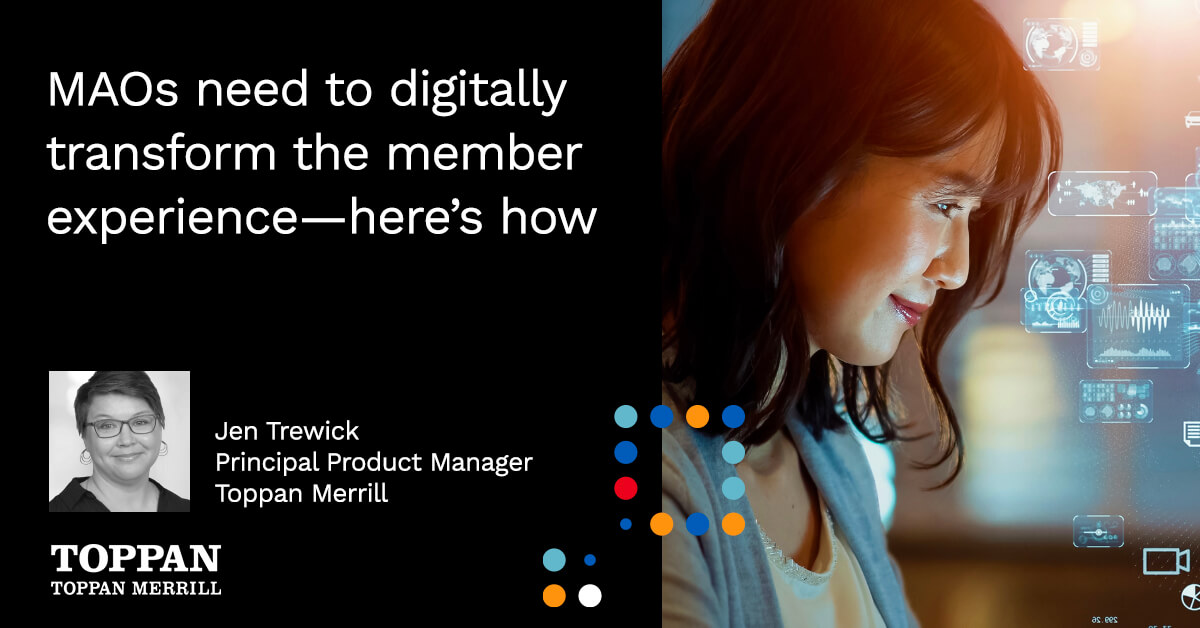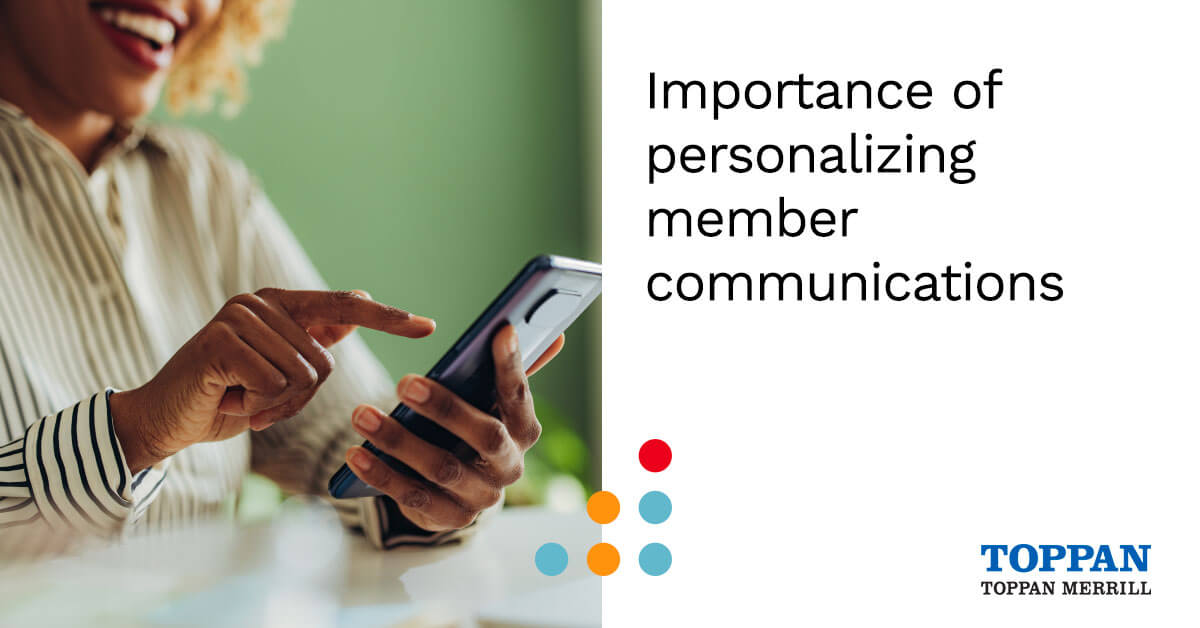In today’s world, many Payors are challenged with financial reckoning to be more responsible with their cost centers. Marketing and product management departments are realizing the need to do more with less and prove their worth along the way. Despite the lower costs of a digital-only approach to member outreach, businesses from a variety of industries, extending from the simple marketing of consumer packaged goods to the more complex marketing of products like health insurance, are realizing the benefit of using a multichannel marketing approach.
The multichannel outreach approach has enabled these businesses to realize the benefits inherent to digital and traditional methods and combine those benefits for a synergistic optimization that yields a higher likelihood of the customer consuming the content.
Benefits of digital and traditional member outreach methods
No matter your industry, whether you have more basic product feature communication needs or more sophisticated member communications, the benefits you can realize through combining digital and traditional consumer outreach methods are numerous.
Benefits of digital outreach channels
- Pay once, use perpetually— With a digital outreach channel like email marketing, you can pay once to acquire an email address and then market to it forever. With social media channels, you are spending money or employee time (or both) to gain new followers, but then have the benefit of promoting messages to them ongoing.
- Wide variety — Whether leveraging earned media (e.g., organic social media posts) or paid media (e.g., search engine advertising), the variety of digital channels available to businesses to connect with a specific demographic are plentiful. Leveraging digital means of communication may allow you to reach a wider variety of consumers from a wider array of industries and interests.
- Leveraged intent— Due to the nature of online channels being searchable, businesses can identify consumers’ needs based on what they are searching for and respond with relevant content. In this case, content management systems must be integrated with other automated systems to ensure the right message is provided to the client at the right time.
- Extended reach — While traditional means of correspondence (e.g., direct mail) have a rich history of success, having additional channels so readily available increases the likelihood of a business effectively reaching its customers.
- Sophisticated brand outreach— For firms using more sophisticated and powerful dynamic publishing solutions, digital outreach channels provide a method for better controlling the firm’s online brand representations.
Benefits of traditional outreach methods
- Physical-world interaction— Whether leveraging a direct mail postcard, an important document delivery, or a television spot, the physically present aspect of traditional outreach can come as a breath of fresh air to an otherwise digitally cluttered consumer.
- Improved consumer reach— For some businesses, certain segments of consumers may be harder to reach through digital means. By utilizing both digital and traditional outreach methods, businesses are able to reach more types of consumers.
- Higher engagement rates— Due to screen fatigue and the clutter of digital noise, engagement rates for digital outreach are often lacking. For example, average email open rates are around 20% and response rates less than 3%. Traditional outreach methods, such as direct mail, boast considerably higher rates of viewership and response rates. For example, almost all mail pieces are handled and opened by the consumer, and the average response rate to direct mail is 9%.
- Better brand control — Offline, traditional outreach methods — whether it be via direct mail, print advertising, or in face-to-face event-printed content — allow businesses to better control their brand and message, as well as the way their brand messaging is displayed on the page.
Finding the right balance between traditional and digital channels
Both digital and traditional methods of communicating with customers are valuable. Individually, they have their own strengths but combined, they help businesses strike a balance that increases reach, brand continuity, and consumer engagement.
Academic researchers Prasad Naik and Kay Peters (Journal of Interactive Marketing, 2009) illustrate that there are synergies between digital and traditional channels through very systematic and scientific means. They show that in a mixed format, where a business leverages both digital channels and traditional channels, there is a beneficial carryover effect within channels and a spillover effect between the channels. The carryover effect was found to benefit a communication channel in a temporal way. For example, if a consumer sees a direct mail advertisement at a given point in time, they are much more likely to engage another direct mail piece later. In addition to the carryover effect, there is also a spillover effect between channels. For example, if a consumer views a traditional offline advertisement (e.g., television ads), their likelihood of engaging with online advertising increases significantly.
But how do you strike the best balance between the two to fully leverage each method’s strength and the synergies of combined execution?
Managing the dance between traditional and digital channels
Ensuring the ideal mix between traditional and digital channels requires a well-balanced effort and accurate evaluation by the marketer or product manager. While several important considerations should be evaluated, these four elements deserve special attention:
- Focus on timing— The dance between traditional and digital communication approaches can occur at multiple points in the customer journey. For example, a consumer may first be exposed to a business in a television ad (traditional) and then search for that brand online (digital). As that consumer moves beyond the awareness stage in their journey, they begin to consider multiple businesses and services, and at this point, they may be influenced again by traditional offline means, such as a well-targeted and expertly timed direct mail piece, which turns the consumer into a customer.
- Track touchpoints — Timing aside, it is important for businesses to use automated solutions for tracking consumer touchpoints. With a firm understanding of which touchpoints are moving the average consumer along to purchase, businesses can then utilize automated content management systems to ensure the right content is being placed in front of the consumer at the right time, both digitally and traditionally.
- Manage production — In addition to automated tracking solutions, businesses need to balance their efforts between traditional and digital channels with the help of production management software to enable a more timely launch of new campaigns and/or ongoing touchpoints in existing communication campaigns. Automated communications and content management greatly improves the ability of businesses to declutter their outreach and benefit from cross-channel strengths that exist between traditional and digital communication channels.
- Attribute successes — Lastly, an important element of finding the right mix between traditional and digital channels is ensuring your attribution model accurately assigns sales influence to the different channels so that marketing spend can be aligned. Innovations in traditional marketing channel content management allow businesses to personalize the marketing content with trackable URLs, vanity phone numbers, and other means for determining the source of the sale.
How Toppan Merrill can help
Toppan Merrill offers several services, including document creation and management, sales enablement, omnichannel communications, printing services, and more. We deliver best-in-class solutions that help you respond quickly to changes in regulations, client needs and markets.
Learn more about how we can help you with mission-critical content by visiting our website.


